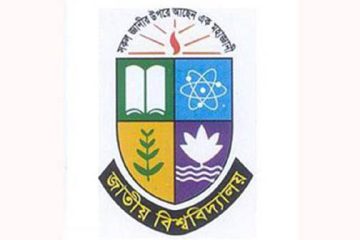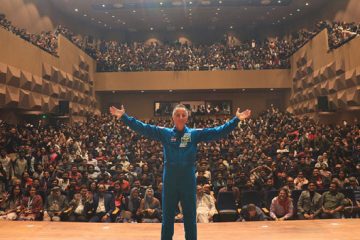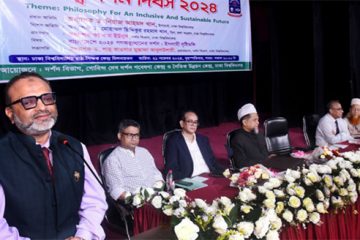The Kalyanpur canals, most of which had been freed from blockages in a concerted effort by the government in 2011, have reverted to their blocked
condition preventing water flowing through them freely.
Those who have already grabbed land on both sides of the canal are now dumping wastes inside the canals creating the blockages.
Every year during the monsoon, the areas of Mirpur, Shewrapara, Kazipara, Shyamali, Agargaon and Kalyanpur become water-logged.
Visiting the canal, which runs from Kalyanpur to Agargaon via Shyamali, it was found that the black water of the canals was almost stagnant due to a huge amount of waste inside.
At many points the flow of water had completely stopped blocked by the dumped wastes.
Residents in the area said no government officials had come in the last few months to clean the water.
There are shops including tea stalls, rickshaw garages, iron shops and also kitchen markets on the two embankments of the canal.
The wastes of the kitchen market including left-over of kitchen items and blood of fish and chicken, had also been dumped in the canal.
In some places the canal had become thinner and in some places disappeared by the high-rise buildings established on the canal.
‘Even the road where you are walking was once the Kalyanpur khal,’ said M Manik, an old-man residing in the area for long. ‘Due to the illegal structures on the two sides of the canal, the canal has become as thin as 8 to 10 feet in some places.’
Residents of these areas alleged that encroachment on these canals was still continuing with the authorities rarely visiting the canals to clean the waste.
‘I did not see any one coming in the last several months,’ said Sakib, a tea shop owner near Shyamali Kazi office.
However, AKM Shahid Uddin, superintending engineer of Drainage (R&D) Circle and also project director of WASA’s Removal of Water Logging in Dhaka City Project, claimed that they were continually cleaning the canals, though it was not successful due to the conduct of the kitchen market, shops and people living besides the canal.
‘You see many shops have been set up besides the canals,’ he said.
He said tone part of the canal was under the jurisdiction of the Public Works Department.
‘A meeting was held on April 30 at PWD and according to the meeting’s decision they will clean the canal within 15 days and will hand it over to us.’
Shahid Uddin said they would clean the canal by the second week of June, before the rainy season starts.
The National Task Force on Rivers issued an order on September 29, 2010 to free the Dhaka city’s 26 canals from encroachment and pull down all illegal structures on their banks.
In 2011, the authorities carried out eviction drives at Ramchandrapur, Rupnagar, Mahakhali, Kalyanpur (Kha, Gha and main), Devdholai and Katashur canals and reclaimed them from encroachment.
In December 2011, shipping minister Shahjahan Khan, who heads the task force, said the task force was expected to reclaim only 13 out of the 43 canals as the remaining canals had been filled up beyond reclamation.
In May 2012 year, the DWASA had so far reclaimed eight canals and the minister asked the DWASA to initiate legal actions against the people encroaching on the city’s canals ignoring the warnings given to them.
Sharif Zamil, joint secretary of Bangladesh Paribesh Andolan, said DWASA had started expanding its drainage system in the recent time, instead of cleaning and reclaiming the canals.
‘But to prevent water stagnation and to retain water bodies there is no alternative but to reclaim the canals. Water stagnation problem in rainy season could not be eradicated by only cleaning the drainage system,’ he said.
Though the government had made its commitment to reclaim all the canals of the country there was not much positive in what they had done so far, he said.
According to different land surveys, particularly the Dhaka City Survey 1995-2009, encroachers have taken 43 out of the 54 canals that once crisscrossed the city interconnecting the four rivers surrounding it, which resulted in the destruction of almost the entire natural sewerage system of the city.
Most of the land around the 43 canals has been registered as owned by individuals and public sector agencies in different land surveys leaving no sign that the land was once canal beds.
-With New Age input




















